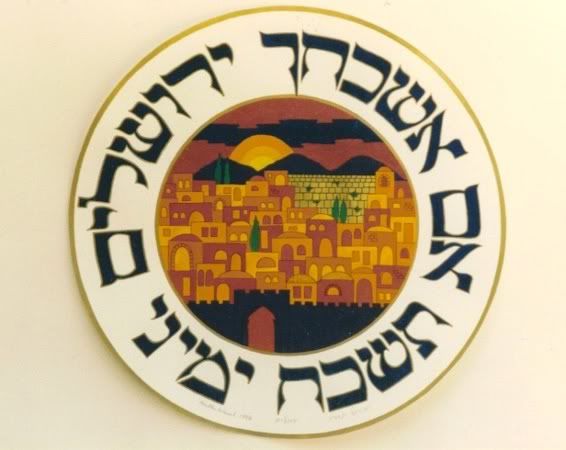Amona was different, maybe its because Sharon is in the hospital and Olmert is trying to make a name for himself; maybe because the Yesha leaders were screaming for blood. The pictures and accounts of the Police brutality are clear violations of their mandate. Each side has literal blood on their hands. What I'm trying to understand is why Amona was different. HaRav Aharon Lichtenstein writes about the difference:
The difference would seem to arise from the fact that this time both parties believed that what was in jeopardy now was much more significant than what had been at stake in the summer. Even those members of the government who believed that the evacuation of Gush Katif was necessary and called-for, understood that the inhabitants of those settlements went there with the purest of motives and intentions, with governmental guidance and support, and were now paying a heavy price because the circumstances had changed - and the attitude towards them accordingly. The inhabitants of Amona, in contrast, are viewed by the government as violators of the law, engaged in patently illegal behavior, and the concern that this would not be a one-time event but rather a phenomenon spreading over a whole chain of hills triggered its action. On the other hand, the public that opposed with force the demolition of the houses in Amona did not act in the same way in the summer because Gush Katif was considered relatively peripheral, both geographically and existentially, while now we are confronting the evacuation of outposts located in the heart of the Shomron.(The full shiur can be found here) I'm not sure if Rav Lichtenstein gives a real answer, but the point is that we can return to what made the disengagement of Gush Katif peaceful, understanding.
Hence, at Amona both sides displayed determination, but abandoned sensitivity in order to gain the upper hand. While the question of which side was in fact victorious is an important one, it seems clear which side lost: the State of Israel and its population as a whole. Thus, the question that arises in light of what we saw is "God in heaven, what are they waiting for? For deaths?" Those who dispatch youths and fire them up to the point where they endanger the lives of soldiers and police by throwing cinderblocks at them what are they waiting for? And those who send mounted police to suppress those same youth what are they waiting for? This problem is a national one; even somone who is altogether cut off from one of the camps emotionally, politically, ideologically must regard the actions of both sides with concern...
...Along with the insight and restraint that are required, we need to understand not only our own needs and our own wounds, but also those of the other side. Along with our questioning of the measure of force and power mobilized against youngsters - and these are undoubtedly serious questions. We must ask ourselves what thoughts and feelings motivated the people who dispatched those youths, those who stoked the flames of violence against the police and the state. These, too, are serious questions. The same passion can be destructive, God forbid, or it may be constructive and valuable.

2 comments:
It was the state-empowered mamlachti rabbis, handpicked by the Yesha Council to quash resistence and not interfere with the decided upon PR that made Gush Katif go smoothly. Amona was too centralized for that and the residents were much less religiousy coercive, if you will - in that they allowed every protestor to go to a spot where the struggle was at their confort level (i.e. the beit knesset for singing/praying, inside the houses for passive resistance and on the rooves for non-lethal active resistance, etc.
Who threw the first rock is inconsequential, but incidentally, I saw quite a few rocks save a young person from being trampled by horses, so guess you had to be there to really get it.
Interesting. It seems to me (living in the States at the moment) that both sides have the proverbial "blood on their hands". I fnd fault with the way the Police came to Amona, and I find fault with the Yesha Council.
Who threw the first rock is inconsequential.
I agree, but when both side come prepared for war - war is going to happen.
Post a Comment